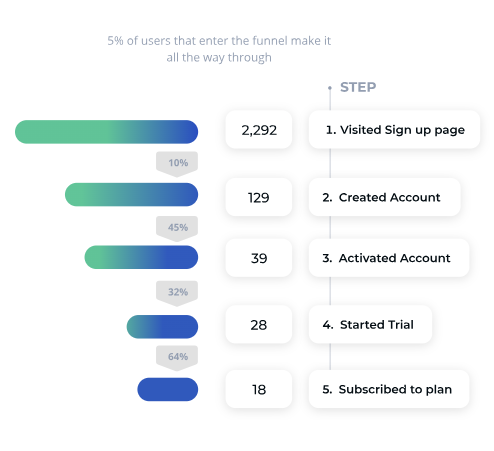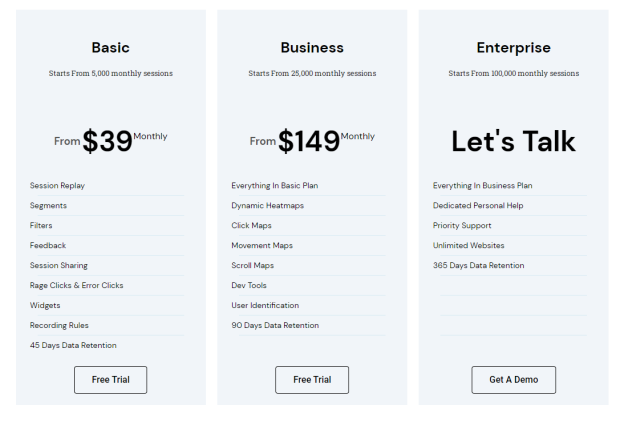As an online business owner, you must know how your users interact with your web app, landing page, website, or...

5 Steps to complete a UX Audit (Free Checklist + Templates)
Ever wondered how your website visitors really experience your site? A UX audit, or user experience audit, is the answer. It’s like a magnifying glass for your online platform. When you complete the steps for a UX audit you are helping you see where users might be struggling.
Your mission? To improve every click, scroll, and interaction on your website. What should you do to begin such a task?
Below you’ll learn about the 5 important steps to complete UX audit.
What is a UX audit?
A UX audit, or User Experience Audit, might seem like tech jargon to some. But in simple terms, it’s an evaluation process used for identifying issues affecting a website’s performance and user engagement.
This process involves a deep dive into your website’s usability from the perspective of your users.
The Importance of Conducting a UX Audit
A well-executed UX audit can significantly improve user experience on your site, which leads to more sign ups or meetings booked.
It helps you understand how visitors interact with different elements and identifies areas where they may struggle or drop off completely.
Steps to Completing a UX Audit
The journey of conducting a successful UX audit involves multiple, but simple, steps.
Step 1: Define Your Goals
To start, identify what you’re trying to achieve with your UX audit. Are you looking for ways to boost conversions or improve user engagement? Clearly defined goals will guide your efforts and give focus to the entire process.
Step 2: Gather User Data
Data is the lifeblood of any UX audit. You need raw information about how users interact with your site or app. Tools like FullSession.io, which offer user session recording features, are great for this step as they let you see exactly what users do on your platform.
Using analytical tools like this are the only way you can get insight across many different statistical categories.
Step 3: Analyze Behavior Using Heatmaps
Digging deeper into data means understanding user behavior patterns using heatmaps – another cool feature from FullSession.io. It helps visualize areas where users click most often, providing insights into their preferences and pain points.
Things you can track:
- Preview the heatmap on different devices.
- See the number of total views and total clicks.
- Track error clicks.
- Track rage clicks.
- Track dead clicks.
- See the average load time on page.
Funnel Optimization Software Use in Analysis
This is where funnel optimization software becomes useful; by analyzing drop-off points within various stages of customer journeys, we can understand why some paths work better than others and optimize accordingly.
Tips For Conducting A Thorough Analysis:
- Create detailed personas based on user behaviors identified through heatmap and funnel analysis.
- Prioritize fixes according to impact on overall experience.
- And remember, your analysis should always link back to the goals you set in step one.
Step 4: Implement Changes
Time to act on the insights gained from steps two and three, and begin implementing changes that will optimize your user experience. It’s one thing to know about why your users are dropping off or having errors on your site. But it’s another thing to effectively fix it, increasing your conversion rate.
User Heatmap Analysis
Visualize the movements of your site’s users as if you had X-ray vision – track their clicks, scrolls and mouse actions in real time.
Imagine if you could paint each of your user’s interactions on your webpage – where they click, scroll or move their mouse. The areas that get more interaction become ‘hotter’ and those less frequented stay ‘cooler’. This visual representation of data is what we call a heatmap.
How does you use heatmaps?
In the world of UX audits, understanding user behavior is crucial. But instead of guessing or relying on anecdotal evidence, FullSession gives you hard data through heatmaps.
This tool records every click and movement from each visitor session on your site and translates this into vibrant color-coded maps. You can quickly identify hotspots – areas getting lots of clicks – as well as zones being ignored by visitors.
The benefits: Improved User Experience & Conversion Rates
Analyzing these heatmaps allows us to understand not just what users do but why they do it – paving way for meaningful changes in design or content strategy which directly lead to improved engagement rates. Learn how to calculate your conversion rate here.
For instance, if there’s an important CTA button being neglected because people aren’t scrolling down far enough? With insights from our heatmap analysis we may suggest moving that button higher up the page so more eyes land upon it.
Overall UX Audit Checklist
Let’s dive into the comprehensive checklist to guide you through this crucial task.
Have you set a goal for your audit?
First things first: what do you hope to achieve with your UX audit? Understanding user behavior better? Boosting conversion rates? Make sure these business objectives are clear before moving forward.
Data analysis
Your next step is examining any existing data from sources like Google Analytics or customer feedback surveys. This will give insight into where users may be struggling on your site.
Do you have user personas in place?
Create user personas that reflect your typical customers’ demographics, behaviors, needs, and motivations. Then create scenarios based on how these personas would interact with your product or website.
Can you visualize the users flow?
A critical part of any UX audit involves analyzing user flows. You need to understand the paths users take when interacting with your platform – from entry point to end goal – which can highlight potential problem areas.
How Often You Should Perform a UX Audit
The frequency of conducting a UX audit can depend on several factors. Let’s investigate the various aspects to determine when it could be most beneficial for your organization.
Size and Complexity of Your Website
If your website is large or complex, you may need to conduct audits more frequently. Changes in user behavior could impact different sections at different times, so regular checks help keep everything running smoothly.
On the other hand, smaller websites with less complexity might not need as frequent audits. But remember, this doesn’t mean they should be neglected.
Your Business Cycle
Your business cycle also plays a significant role in determining audit frequency. If you’re launching new products or services regularly, it makes sense to perform UX audits after each launch to gauge user reactions and interactions.
This ensures that any changes have had the desired effect and helps identify areas for improvement before things go too far off track.
New Technology Integration
Incorporating new technology into your site? It’s best practice then to carry out an immediate UX audit. This way you’ll understand how these changes are affecting user experience and if there are any unforeseen issues that need fixing.
A Drop in Key Metrics
- If there’s been a noticeable drop in key metrics such as conversion rates or average session durations.
- You see higher than usual bounce rates.
- User feedback indicates dissatisfaction with navigation ease or page loading speed.
It might signal that it’s time for a UX audit. These signs indicate potential issues with user experience that could be driving visitors away from your site.
Run Your UX Audit Right Now For Free
Want to run your own UX audit? It takes 5 minutes to do with Fullsession, and it’s completely free!
FullSession pricing plans

The FullSession platform offers a 14-day free trial. It provides two paid plans—Basic and Business. Here are more details on each plan.
- The Basic plan costs $39/month and allows you to monitor up to 5,000 monthly sessions.
- The Business plan costs $149/month and helps you to track and analyze up to 25,000 monthly sessions.
- The Enterprise plan starts from 100,000 monthly sessions and has custom pricing.
If you need more information, you can get a demo.
So far, we went over traditional analytic tools, and then Fullsession. A tool with valuable insights that all businesses today need for their site audits. Next we’ll talk about what other tools you can use for a valuable UX audit.
FAQs in Relation to Steps to Complete a UX audit
What are the activities of a UX audit?
A UX audit involves analyzing user behavior data, studying heatmaps, checking site navigation, and examining website performance. It also includes assessing accessibility and understanding users’ needs.
How long should a UX audit take?
The time for a UX audit varies based on the website’s complexity but generally takes between 2-6 weeks to ensure thoroughness and accuracy.
What is the process of a UX Audit?
The process starts with defining goals, gathering data using tools then analyzing that information. This leads to recommendations for improving user experience (UX).
How do you conduct a UX content audit?
To carry out a content-focused part of your UX audit, evaluate if it aligns with user expectations. Check readability levels as well as its relevance and value provided to your audience.





